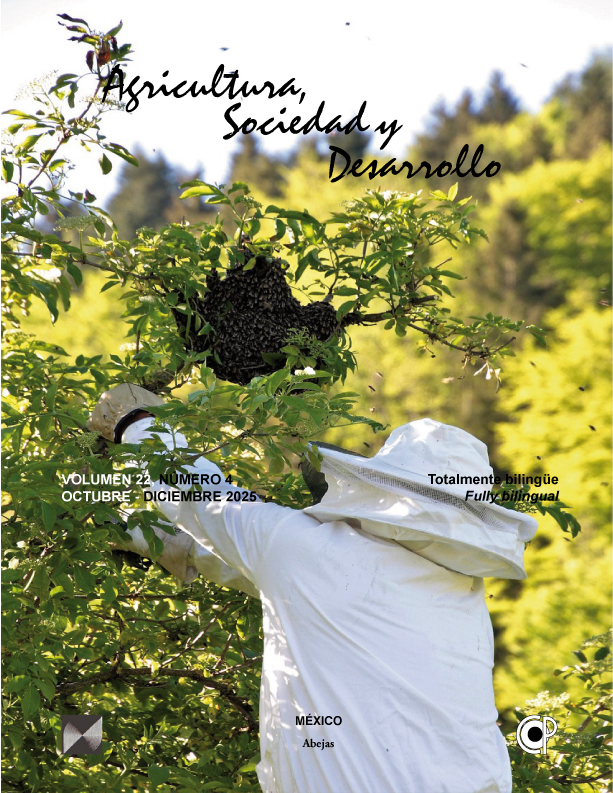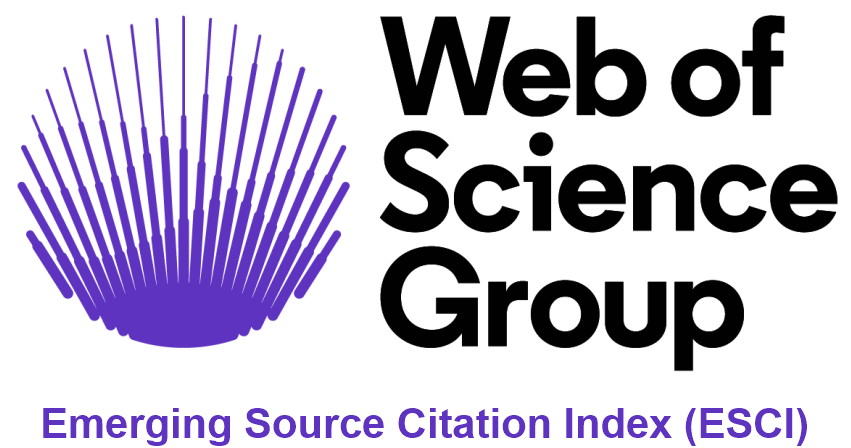Estimation of the forest area required for water sustainability of avocado in the south of the State of Mexico.
DOI:
https://doi.org/10.22231/asyd.v22i4.1728Keywords:
ecosystem services, productive restructuration of rural areas, water availabilityAbstract
This study analyzes the relationship between forest cover and water supply required for avocado (Persea americana) cultivation, in order to determine a balance between these two; based on the “Water Yield” model, which makes it possible to quantify water production in a specific watershed. The results obtained enable establishing the amount of forest needed to provide adequate water supply for avocado, in the context of the growing demand for this agro-food product worldwide. In this sense, it is possible to outline the guidelines for reflecting on changes in land use in the territory, based on the switch to avocado cultivation, so that an alteration in water availability can be avoided. We conclude that in the southern region of the State of Mexico, considering the regulatory impact of forest, it appears that the proportion required to provide water to one hectare of avocado is 1.35 ha.
References
Allen RG. 1998. Crop evapotranspiration - Guidelines for computing crop water requirements, FAO: Rome, Italia. https://www.fao.org/4/x0490e/x0490e00.htm. 300 P.
Álvarez MJ. 2023. El agua como bien común: Los derechos de las generaciones futuras. Cadernos Eletrônicos Direito Internacional Sem Fronteiras, 5(1). 1-9. https://doi.org/10.5281/zenodo.7746564.
Alvear NE. 2018. Estudio multitemporal de cambio de uso del suelo, en la microcuenca del río Escudillas. Tesis de Maestría. Universidad Técnica del Norte. Ecuador. https://repositorio.utn.edu.ec/handle/123456789/7879.
Borrego A, Allende TC. 2021. Principales detonantes y efectos socioambientales del boom del aguacate en México. Journal of Latin American Geography. 20(1). 154-184. https://dx.doi.org/10.1353/lag.2021.0006. DOI: https://doi.org/10.1353/lag.2021.0006
Calixto NJ, Cárdenas JA, Becerra D. 2022. Gestión sostenible de los recursos hídricos en Colombia, Ecoe Ediciones S.A.S.: Bogotá, Colombia. https://repositorio.ufps.edu.co/handle/ufps/6723. 84 p.
CONANP. 2024. Programa de Manejo del Área Natural Protegida con la categoría de área de protección de recursos naturales cuencas de los ríos Valle de Bravo, Malacatepec, Tilostoc y Temascaltepec, Estado de México. CONANP: Estado de México, México. https://www.conanp.gob.mx/programademanejo/PMValleBravo.pdf. 425 p.
De Ita A. 2019. Las reformas agrarias neoliberales en México. Revista El cotidiano. 214. 95-107. https://www.ceccam.org/sites/default/files/Las%20reformas%20coti_214.pdf.
Eastman R. 2020. Manual Terrset 2020. Geospatial monitoring and modeling system, Clark Labs.: Boston, USA. https://clarklabs.org/wp-content/uploads/2016/10/Terrset-Manual.pdf. 391 p.
Escalante R, González F. 2018. El TLCAN en la agricultura de México: 23 años de malos tratos. Ola Financiera 11(29). 85-104. https://doi.org/10.22201/fe.18701442e.2018.29.64143. DOI: https://doi.org/10.22201/fe.18701442e.2018.29.64143
Felipe J. 2023. Valoración del rendimiento hídrico de la cuenca del río Cajonos. Tesis de Maestría. Universidad de Chapingo. México. https://repositorio.chapingo.edu.mx/items/356ac49b-b886-4638-82f2-b4a4db2df3c9/full.
Gobierno de México. 1992. Ley de Aguas Nacionales. Diario Oficial de la Federación. https://www.diputados.gob.mx/LeyesBiblio/pdf/LAN.pdf.
Gómez JJ. 2016. Reformas del artículo 27 constitucional. In: El derecho agrario mexicano y la Constitución de 1917. J. Gómez. Biblioteca Constitucional. https://inehrm.gob.mx/recursos/Libros/Elderechoagrario.pdf. . pp: 151-168.
Hernández JL. 2021. La agricultura mexicana del TLCAN al T-MEC: consideraciones teóricas, balance general y perspectivas de desarrollo. El trimestre económico. 88(352). 1121-1152. https://doi.org/10.20430/ete.v88i352.1274. DOI: https://doi.org/10.20430/ete.v88i352.1274
LGEEPA. 2023. Ley General de Equilibrio Ecológico y la Protección al Ambiente. Diario Oficial de la Federación. https://www.diputados.gob.mx/LeyesBiblio/pdf/LGEEPA.pdf.
Lovera V, Roldán I, Sánchez J, Torres P. 2018. Evaluación del servicio ecosistémico de rendimiento hídrico entre los años de 1994 y 2016 en el municipio de Valle de Bravo, Estado de México. Papeles de geografía. (64). 93-113. https://doi.org/10.6018/geografia/2018/322931. DOI: https://doi.org/10.6018/geografia/2018/322931
Martínez MN. 2019. Plan de exportación para la asociación “La Libertad”. Tesis de Licenciatura. Universidad Autónoma del Estado de México. México. http://ri.uaemex.mx/handle/20.500.11799/105498.
Minga SV. 2018. Análisis de cambio del rendimiento hídrico actual y bajo escenarios climáticos futuros en la región sur del Ecuador. Tesis de Maestría. Universidad Autónoma del Estado de México. México. http://ri.uaemex.mx/handle/20.500.11799/99126.
Natural Capital Project. 2022. InVEST 3.14.1 User’s Guide. Stanford University, University of Minnesota, Chinese Academy of Sciences, The Nature Conservancy, World Wildlife Fund, and Stockholm Resilience Centre. https://naturalcapitalproject.stanford.edu/software/invest/invest-downloads-data.
Nkwonta OI, Dzwairo B, Otieno FAO, Adeyemo JA. 2017. A review on water resources yield model. South African Journal of Chemical Engineering. (23). 107-115. https://doi.org/10.1016/j.sajce.2017.04.002. DOI: https://doi.org/10.1016/j.sajce.2017.04.002
Rahimi L, Malekmohammadi B, Yavari AR. 2020. Assessing and Modeling the Impacts of Wetland Land Cover Changes on Water Provision and Habitat Quality Ecosystem Services. Natural Resources Research (29). 3701-3718. https://doi.org/10.1007/s11053-020-09667-7. DOI: https://doi.org/10.1007/s11053-020-09667-7
Ruiz VH. 2022. Incendios forestales, cambios de uso de suelo y su impacto en el balance hidrológico de los bosques templados del centro de México. Tesis de Maestría. Universidad Autónoma Chapingo. México. https://repositorio.chapingo.edu.mx/items/6d406dcb-bb61-44d4-b840-773a0a5d062b.
SADER. 2020. Proyectos de Desarrollo Territorial (PRODETER´s). Gobierno del Estado de México: Estado de México, México. https://secampo.edomex.gob.mx/sites/secampo.edomex.gob.mx/files/files/Publicacines/evalu%20prog%20facem/Compendio_Indicadores_PDR_2019.pdf. 91 p.
Saenz LA. 2018. Manejo Forestal en la unidad de aprovechamiento comunal, San Juan Xoconusco, Donato Guerra, Estado de México. Tesis de Licenciatura. Universidad Autónoma del Estado de México. México. http://ri.uaemex.mx/handle/20.500.11799/95212.
Scordo F, Lavender TM, Seitz C, Perillo VL, Rusak JA, Piccolo MC, Perillo GME. 2018. Modeling Water Yield: Assessing the Role of Site and Region-Specific Attributes in Determining Model Performance of the InVEST Seasonal Water Yield Model. Water. 10(11). 1-42. https://doi.org/10.3390/w10111496. DOI: https://doi.org/10.3390/w10111496
SEMARNAT. 2000. Decreto por el que se declara área natural protegida, con el carácter de reserva de la biosfera, la región denominada Mariposa Monarca. Diario Oficial de la Federación. https://simec.conanp.gob.mx/pdf_decretos/40_decreto.pdf.
SEMARNAT. 2001. Programa de Manejo del Área Natural Protegida con el carácter de Reserva de la Biosfera de la Mariposa Monarca. Diario Oficial de la Federación. https://simec.conanp.gob.mx/pdf_libro_pm/40_libro_pm.pdf.
Sharp R, Tallis H, Ricketts T, Guerry A, Wood S, Chaplin-Kramer R, Ennaanay D W. 2018. InVEST 3.2.0. User’s Guide. Stanford University, University of Minnesota, Chinese Academy of Sciences, The Nature Conservancy, World Wildlife Fund, and Stockholm Resilience Centre.
Shi X, Matsui T, Machimura T, Haga C, Hu A & Gan X. 2022. Impact of urbanization on the food–water–land–ecosystem nexus: A study of Shenzhen, China. Science of the Total Environment, 808. 1-14. https://doi.org/10.1016/j.scitotenv.2021.152138. DOI: https://doi.org/10.1016/j.scitotenv.2021.152138
Song C, Lee K, Choi A, Jeon S, Kim U, Kim J, Kim T. 2015. Application of InVEST Water Yield Model for Assessing Forest Water Provisioning Ecosystem Service. Journal of the Korean Association of Geographic Information Studies. 18(2). 120-134. http://dx.doi.org/10.11108/kagis.2015.18.1.120. DOI: https://doi.org/10.11108/kagis.2015.18.1.120
Vuille M. 2013. El cambio climático y los recursos hídricos en los Andes tropicales. Banco Interamericano de Desarrollo. BID: Washington, USA. http://dx.doi.org/10.18235/0009994. 29 p. DOI: https://doi.org/10.18235/0009994
World Meteorological Organization. 2012. International Glossary of Hidrology, WMO: Ginebra, Suiza. https://unesdoc.unesco.org/ark:/48223/pf0000221862. 461 p.
Yang X, Chen R, Meadows ME, Ji G, Xu J. 2020. Modelling water yield with the InVEST model in a data scarce region of northwest China. Water Supply. 20(3). 1035-1045. https://doi.org/10.2166/ws.2020.026. DOI: https://doi.org/10.2166/ws.2020.026
Published
How to Cite
Issue
Section
License
Copyright (c) 2025 Jeison Javier Loaiza González, Humberto Thomé Ortiz

This work is licensed under a Creative Commons Attribution-NonCommercial 4.0 International License.
Authors who publish in this journal accept the following conditions:
- The authors retain the copyright and transfer to the magazine the right of the first publication, with the work registered with the Creative Commons attribution license, which allows third parties to use what is published as long as they mention the authorship of the work and the first publication in this magazine.
- Authors may make other independent and additional contractual arrangements for non-exclusive distribution of the version of the article published in this journal (e.g., including it in an institutional repository or publishing it in a book) as long as they clearly indicate that the work It was first published in this magazine.
- Authors are permitted and encouraged to publish their work on the Internet (for example on institutional or personal pages) before and during the review and publication process, as it can lead to productive exchanges and greater and faster dissemination of the work. published (see The Effect of Open Access).













